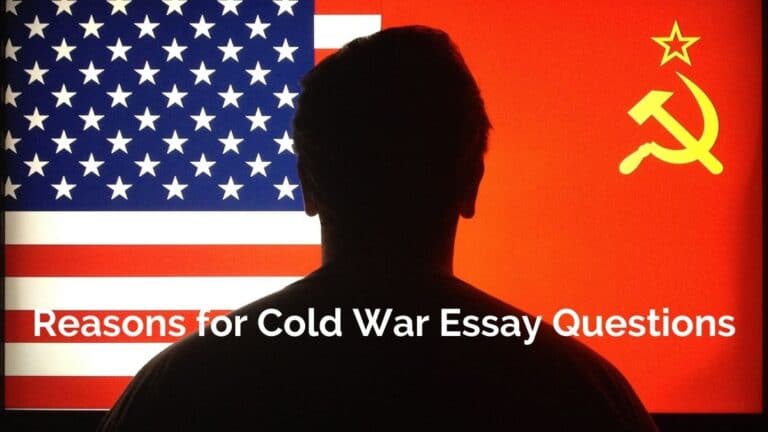Social Studies Message Format
The Social Studies Message format is always the first format students learn. In fact, they learn it in Secondary One history.
Even though students should be familiar with this format, they still make critical mistakes. Hopefully after reading this blog post, you will know how to identify it. In addition, you should master the Social Studies Message format and avoid common mistakes.
How to Identify a Social Studies Message Question
To identify a message question, look out for words such as “shows”, “tells”, “says”, “learns” or “message” in the question.
Some examples of message questions in the last three years include: “What is the message of this source?” (‘O’ Levels 2020) and “What is the cartoonist’s message?” (‘O’ Levels 2018).
Message questions are in essence, inferential type questions that ask you to answer what the creator of a source is trying to say. This is a skill that many other subjects also teach and test.
Social Studies Message Format
For the Social Studies Message format, you are expected to answer one message. Some teachers encourage students to write another message. This is usually the sub-message and is worth less marks.
To score full marks, you need to include the following format in your answer: Inference + Support + Explain (ISE). Different schools call their Social Studies Message format different acronyms (SEE, PEEL, etc), but we are all asking for the same information.
In short, you are expected to tell the marker the author’s message. You are expected to give evidence from the source details (text, images or data) and explain how the evidence supports the message.
Example of the Social Studies Message Format
Source B
An opinion by a student about the national identity in Singapore, published in the local Business Times.
Racial differences quickly disappear when I eat with my friends at the food court, navigating tables reserved with tissue paper, complaining about the crazy weather and chit-chatting about Bollywood movies while queuing to buy bubble tea. Being Singaporean has exposed us to each other’s cultures, and has enabled us to link heritage to culture, and culture to identity. We have even gone as far as creating our own language, one that baffles anyone who isn’t Singaporean.
Question
What is the message of this source? Explain your answer using details from the source.
Answer
The message of Source A is that the Singapore public transportation system has many problems. (Inference) In the source, the system is described as very crowded: “The trains are not only squeezy” and “Buses squeezy got no privacy”. In addition, the commuters add to these problems: “Some people no courtesy” and “But here, there’s only cut-queueing”. (Support) Thus, he rewrote the lyrics to the song to show his frustration with Singapore’s public transportation system. (Explain)
The Social Studies Message Format can be displayed in following flowchart:

How is the Social Studies Message format marked?
Just like all answers in Social Studies, teachers use Levels of Response Marking Scheme (LORMS) to judge a student’s answer. While there are variations, the following is a typical LORMS for the Social Studies Message format question:
L1 Describes the source only 1-2m
L2 Sub-message 2-3m
L3 Valid Message, no support 3-4m
L4 Valid Message, supported 5-6m
What are the usual mistakes for Social Studies Message Format?
The most common mistake is to only have only a sub-message only. In other words, the student only managed to understand the surface message of the source.
Let us look at the example question. The student might answer that the author is saying the trains are crowded or the passengers are rude. This is only a surface interpretation as these are just synonyms of “squeezy” and “no courtesy” in the sources. Thus, no real inference is being made.
To put it another way: if you find that your “inference” is just a rephrase of the source, you are not doing any inferencing.
How can you ensure you get the main message? One of the strategies is to use the Issue of the case study. In this case, the Issue was “Is the Singapore public transport system effective?” Thus, the inference that the transport system has problems answers the issue of the case study.
Another way is to imagine yourself from the point of view of the author. What sort of message would you want to send? Would you only complain about the crowdedness only? It seems the author was frustrated and hence, must be complaining about the whole system.
Finally, you can also imagine what the author wants to achieve. The author clearly wants the system to improve. Thus, he is likely to be complaining about more than just how passengers have no courtesy.
Conclusion
Even though the Social Studies Message format is considered the easiest to answer, many students still stumble.
To make it more difficult, the case study given could be unfamiliar to you, or the source is a particularly difficult source to understand.
Thus, you need to follow the Five Step Method to Ace Social Studies SBQs to ensure that you understand the background and the sources. Finally, you need to practise many different questions so that you become familiar with them.
To move on to the next time of question, the Social Studies Purpose question, click here.
Do continue browsing my site to learn more about History, Social Studies and English.

Critical Thought English & Humanities is your best resource for English, English Literature, Social Studies, Geography and History.
My experience, proven methodology and unique blend of technology will help your child ace their exams.
If you have any questions, please contact us!







